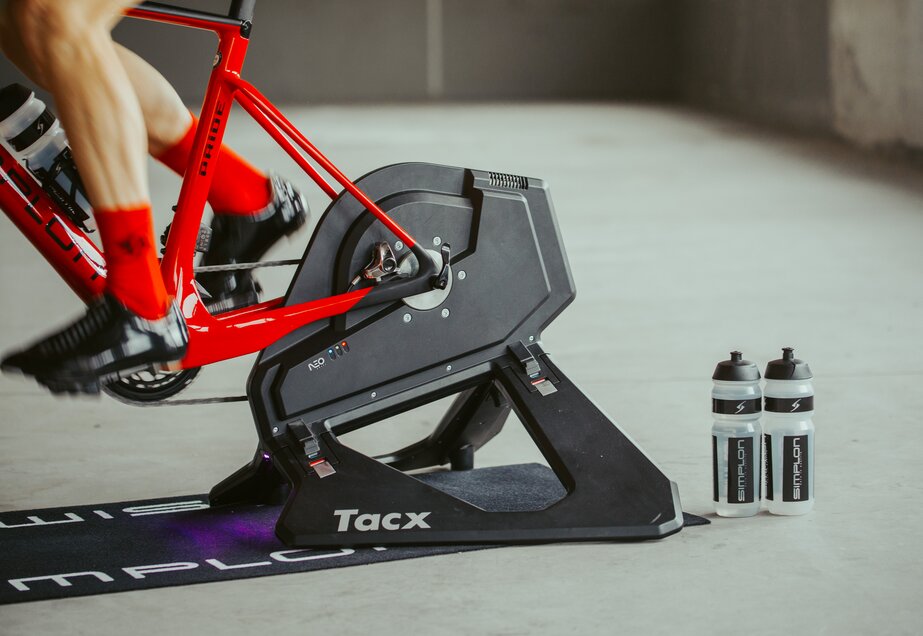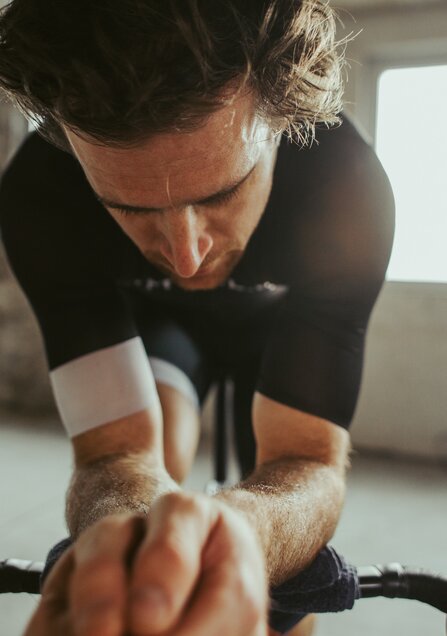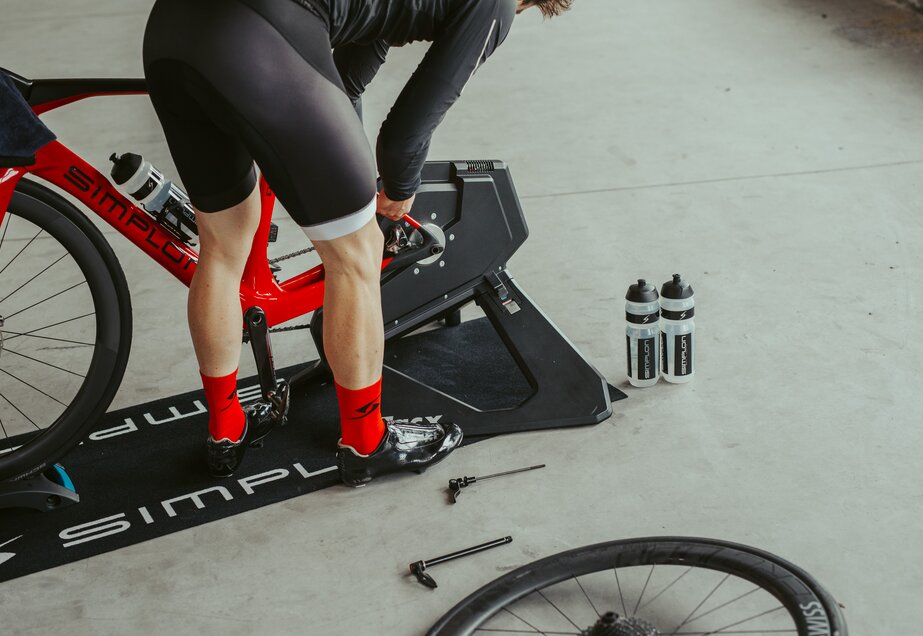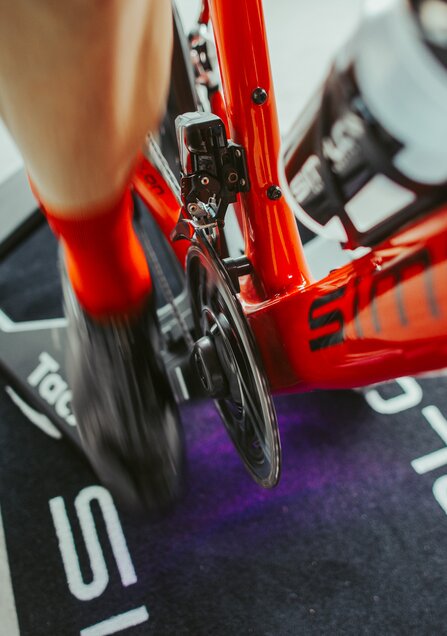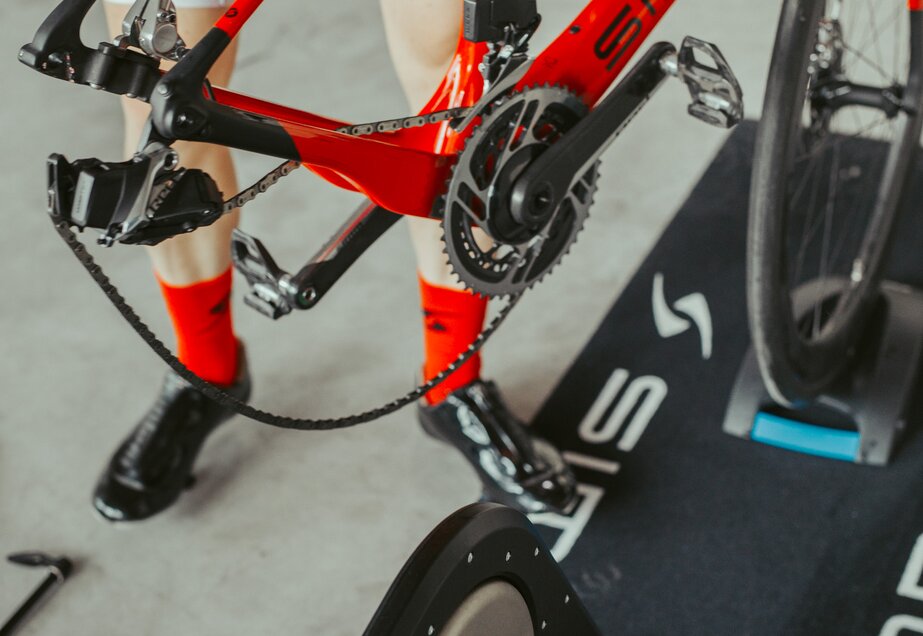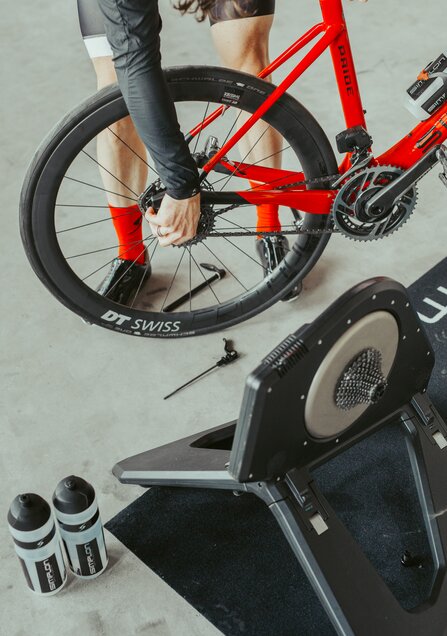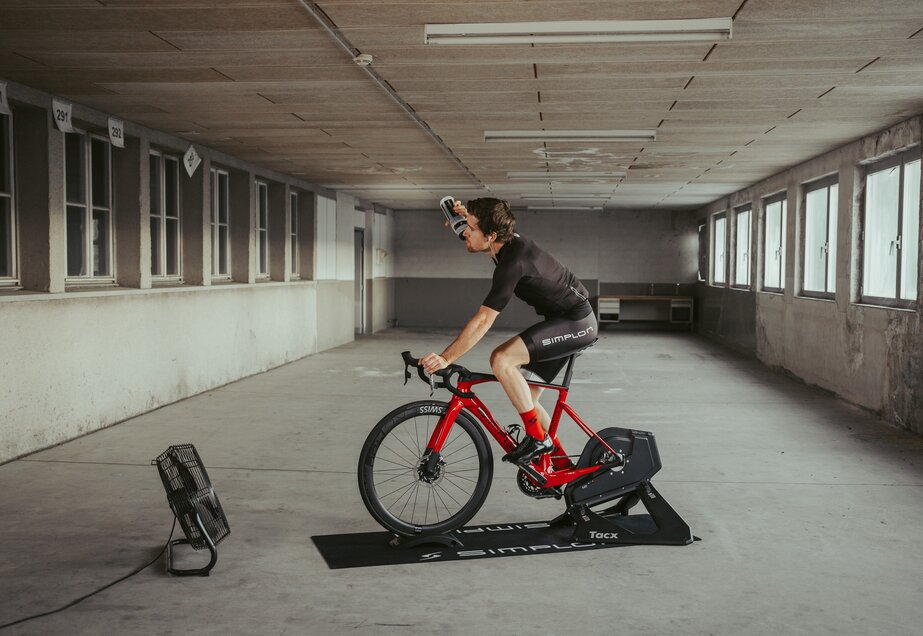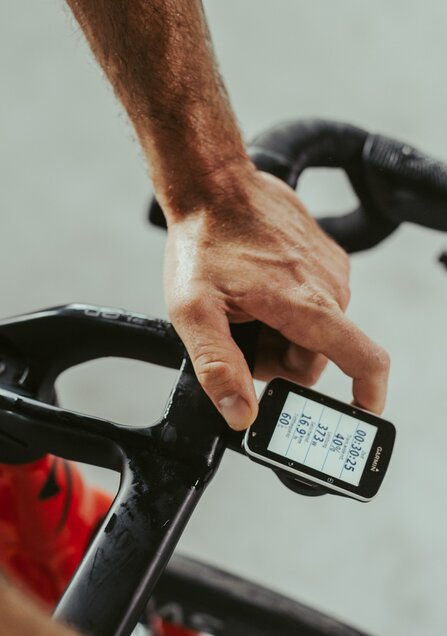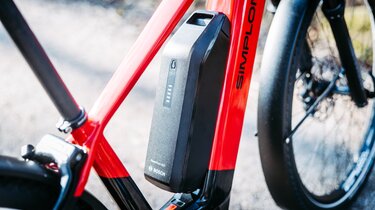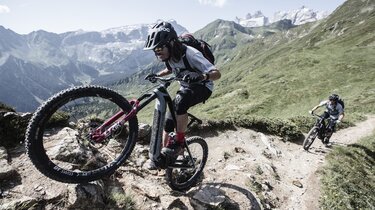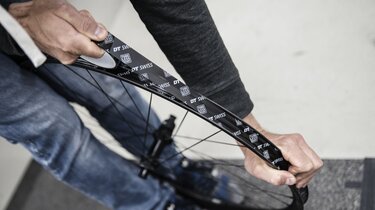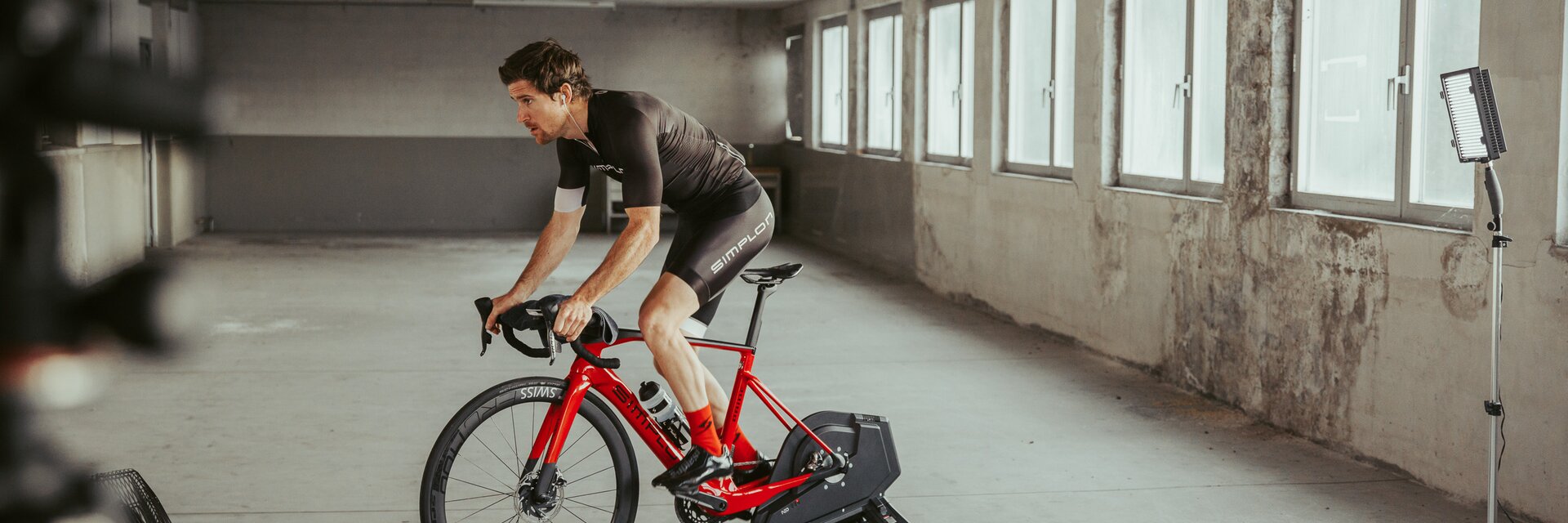

How to: Training on rollers | simplon.com
What are the benefits of training on rollers? Which rollers are there? We’ve summarised everything you need to know about this piece of indoor equipment. Read more!
Training on rollers in winter
Tips and facts about this piece of indoor equipment
Winter – the kilometre killer? It doesn’t have to be! If you’re training on rollers, you can get your kilometres in even on days with frosty temperatures, rain or snow. That’s how you can stay in great shape during the winter months and hit the roads again come spring.
We’ll share our intel on the benefits of roller training and who it is suitable for. Also: What do you need for indoor training in your own four walls? Which Simplon models can be used on rollers? And which rollers are the best ones for you? That’s what you’ll find out now – alongside other helpful information.
What does training on rollers even mean and who is it suitable for?
Many cyclists switch to the erg in winter. But for most of them, this is more of a necessary evil than something to look forward to. Cycling just doesn’t feel “real” on it … But when it comes to indoor pedalling, there’s no need to compromise that much anymore. The magic word: rollers. If you don’t want to get off the saddle of your beloved road bike during the colder months, this training modality is the right one for you.
Generally, there are three different types of equipment for roller training:
1. Standard rollers: The rider balances on three drums with his bike.
2. Turbo trainers: The rear wheel is suspended in an A-frame.
3. Direct drives: The dropouts are clamped onto the trainer without rear wheel.
You’d like to get in some exercise once in a while to keep your shape over the course of the winter months? Or you’re training for your first short-distance triathlon? Then rollers are the right piece of equipment for you. It’s become a sensible support tool even for pros who want to tackle different types of interval training.
What are the benefits of this indoor training modality?
- Independent of the weather: Whether it’s raining, snowing or storming – you can jump on the rollers and start pedalling no matter the weather. Without gloves, a hat, and long trousers.
- Independent of daylight hours: You’re coming home from work and it’s already pitch-black outside? For roller training, you don’t need any special kind of lighting.
- No traffic chaos: Bye-bye red lights, pedestrians and inattentive drivers – instead, you get to focus solely on riding.
- Effective training modality: The biggest advantage of rollers is achieving a steady cadence without phases of just letting the bike roll by itself. That’s how you can get in 60 minutes of extremely effective training.
- Possible anytime and anywhere: In the basement, in your living room or out on your balcony – there’s always room for your rollers somewhere.
- Everything as always: On rollers, you don’t miss out on (hardly) anything. You can assume your usual sitting position, and your saddle and handlebars are adjusted to your preferences – just like in summer …
- Smart workout: Everything’s gloomy and boring – you miss spending time outdoors? Smart trainers remedy this problem. With close-to-real-life simulations and 3D tours, they allow you to ride the legendary mountain stages of the Tour de France, for instance.
Training on rollers in winter - Roadbike expert Jonas from SIMPLON
Which rollers are the right ones for me?
Standard rollers
Standard rollers have three drums and that’s it. You just grab your road bike and place it on the rollers (two under your rear wheel and one under the front wheel). They’re connected to each other with a belt. A certain minimum speed is necessary for the bike to run smoothly on the drums – because that’s when the gyroscopic forces work their magic.
What sounds easy at first is actually hard work when put into practice. Because training on rollers requires balance, patience and persistence. Winter training on standard rollers isn’t really the right option for road bike newbies because it takes a lot of practical experience.
Tip: For your first attempts on rollers, set them up in a way that you can hold on to something. Walls, a door frame or your kitchen counters – anything stable will do.
Pros:
- easy to set up
- requires very little space
- low weight
- realistic riding feel
- trains coordination, strength and riding technique
- universally applicable: even a mountain bike can be placed on rollers – however, it needs to have smooth tyres without any profile
- very affordable
Cons:
- feels quite instable in the beginning
- definitely takes a lot of practice
- very noisy
- resistance cannot be adjusted
Good to know: All Simplon models can be used on standard rollers as long as you are able to adjust the space between the drums to match the length of the wheelbase.
Turbo trainers
On turbo trainers, the rear wheel is suspended in an A-frame. This keeps the bike in a stable position and it can’t fall over. Depending on the model, there are different ways to adjust the resistance: either via the gear shift, via a resistance adjustment mechanism on the handlebars or interactively.
There are large variations in price for the different models. If you’d like to compete with athletes in a virtual Tour-de-France stage, you’ll have to dig deeper into your pockets. Smart trainers including software with elaborately designed 3D worlds are on the rise and make wintry indoor training increasingly interactive.
Pros:
- greater variety of models from simple, mechanically controlled trainers to smart, interactive trainers
- optimum stability
- direct data transfer
- training variety thanks to different apps and software
Cons:
- very noisy
- hefty weight
- lots of tyre wear (maybe you should get a special roller tyre!)
Direct drives
Direct drive trainers are the top class when it comes to rollers. To use it, you take off the rear wheel and clamp the dropouts onto the trainer. Both newbies and pros can benefit from a steady cadence when pedalling. The bike is directly connected to the trainer and forms a unit with it, which then gives you a realistic riding feel. On most direct drives, the resistance is adjusted via the gear shift on the bike. More speed equals more resistance.
On this type of rollers, training sessions of all kinds are possible: from challenging strength endurance training and sweat-inducing sprints to cadence pyramid drills. Everything’s smart in this case too: Performance data are analysed and directly sent to your smartphone or tablet.
Pros:
- no tyre wear
- very quiet
- realistic riding feel
- very stable
- training can be exactly controlled
- connectivity and performance measurements
Cons:
- very pricey
- hefty weight
The roller training setup - what to keep in mind
A bit of preparation and a few little helpers go a long way to make your training easier and more comfortable:
- sufficient ventilation
Make sure there’s enough oxygen in the room! Let some fresh air in by opening a window or use a fan! - floor padding
Made of foam or rubber: Put some padding or mat under your rollers! It minimises the level of noise, catches droplets of sweat and protects your floor. - sweat cover
Speaking of sweat: Without cooling airflow, you’ll probably be drenched within minutes of being on the rollers. A sweat cover protects sensitive components. Ideally, you also clean your bike right after your workout to make sure nothing corrodes. - drinks and snacks
Nobody likes to get off the bike in the middle of training just to get something to eat or drink. So keep some snacks and a drinking bottle on hand! - sound system, TV or notebook
For more variety during indoor training, turn your sound system or TV on! Offline apps are a great option if you don’t have Internet somewhere – for instance, in the basement.
How to train best
Quality over quantity – that’s the motto when it comes to roller training. Pedalling like mad for hours on end isn’t the goal. That’s better done when on the road. Instead, you should keep your training well-structured and sensibly include intervals. For instance, intense sprints that challenge the muscles or technique training like pedalling with only one leg. Generally speaking, roller training sessions should be no longer than 30 to 60 minutes.
Even pros like to use the rollers after an endurance session on the road – to effectively train again. Far away from street noise and distractions due to traffic.
Tip: Special apps like Strava or Zwift let you plan your training sessions in an even more targeted fashion. They’ll show you makers such as training zone, cadence and performance and then directly transfer all data to your phone or tablet.
In a nutshell:
- short and intense is better than long and ineffective
- max. 30 to 60 minutes
- short and more frequent training sessions
- apps that help you track your performance
Which Simplon bikes can be used on rollers?
Simplon has carried out the ultimate rollers test with its road bikes. The following road bikes by Simplon are suitable for roller training:
- Pride
- Inissio Gravel
- Kiaro Disc
- Pavo GF
- Pavo GF Disc
- Mr. T2
The only prerequisite: You cannot clamp the rollers directly onto the frame. The rear wheel must be attached to the rollers using a special axle that is compatible with them.
Are you still missing the perfect road bike to get you started indoors or outdoors? Configure your dream road bike now with our bike configurator!

